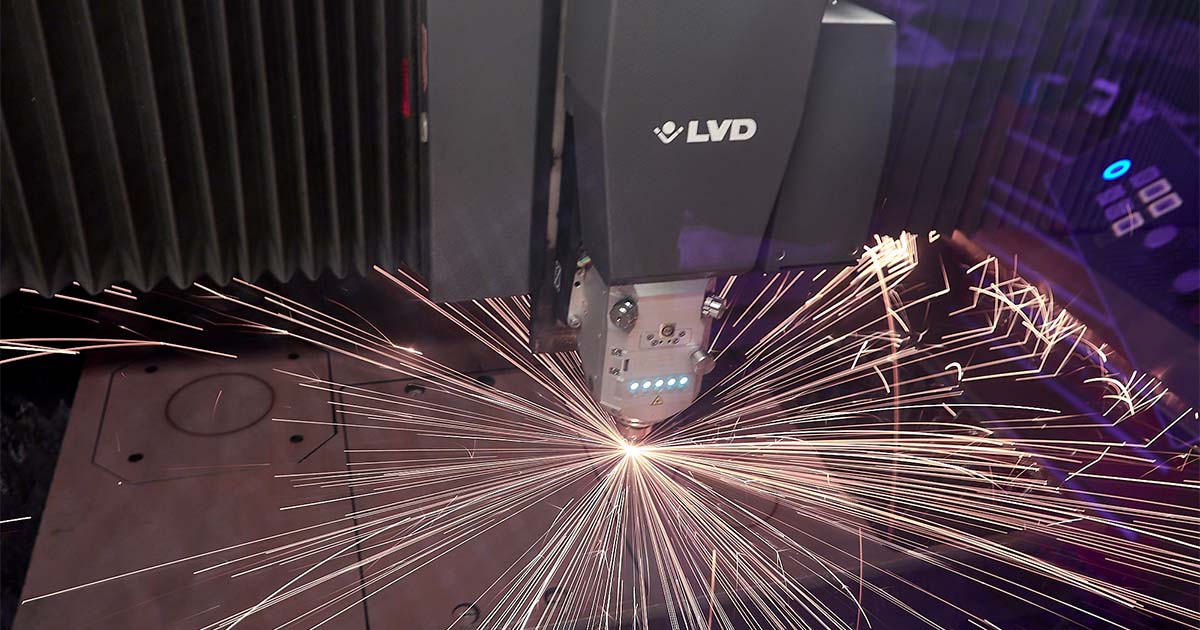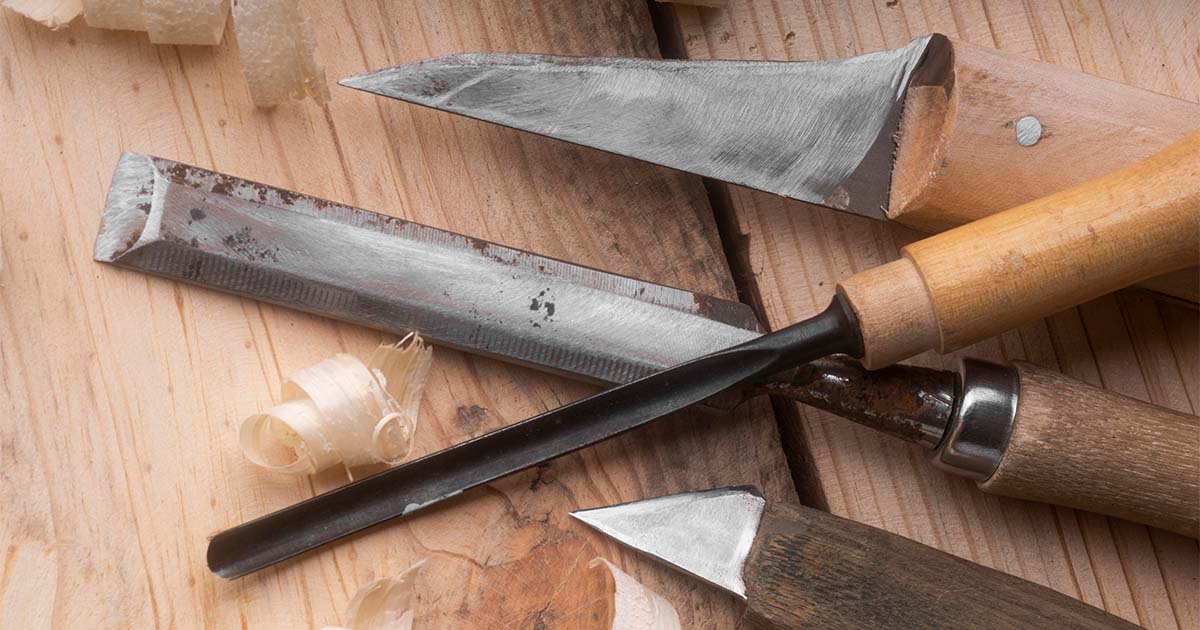
We collect basic website visitor information on this website and store it in cookies. We also utilize Google Analytics to track page view information to assist us in improving our website.
If you’re passionate about metal cutting or just keen to learn more, you’ve landed in the right place.
For over 38 years, Amber Steel has been at the forefront of metal cutting services, specializing in laser cutting, flame cutting, and plasma cutting. Our expertise has carved a niche in this cutting-edge industry, delivering precision and excellence across industrial projects big and small.
In our blog, we’ll share a mix of useful tips, innovative applications, our thoughts on sustainability in steel cutting, and more. Expect stories from the cutting floor, insights into how our processes can streamline projects across industries, and a few lessons we’ve learned along the way.
While we keep some of our trade secrets under wraps, this blog is designed to offer valuable nuggets of wisdom that you simply won't find anywhere else. Whether you’re a professional in the industry or someone fascinated by the possibilities of metal cutting, you'll find something of value here.
So, stick with us as we delve into the finer points of metal work. We’re glad to share our insights and lead discussions that matter to our industry.
How precision metal cutting propels the aerospace industry, from constructing lighter frames to enhancing aerodynamics.
The role of advanced metal cutting in automotive manufacturing, driving innovations in vehicle design and efficiency.
All about the robust and versatile process of flame cutting, ideal for tackling thicker metals with precision and ease.
Discover the art of crafting metal furniture, where cutting techniques meet design to create both functional and aesthetic pieces.
A behind-the-scenes look at the mechanics of metal cutting technologies and the science that makes them tick.
Laser cutting is where extreme precision meets efficiency, allowing for intricate designs and clean finishes.
The critical role of precise steel cutting in developing reliable and intricate medical devices.
How steel cutting supports the oil and gas industry with components that withstand extreme environments and pressures.
Known for its speed and versatility, plasma cutting slices through conductive metals with hot plasma.
Safety first! Tips and insights on maintaining a safe environment while handling powerful metal cutting equipment.
The backbone of construction, where steel fabrication and cutting technologies create frameworks that shape skylines.
Sustainability
A look at sustainability in metal cutting, focusing on practices that reduce waste and conserve energy to protect our planet.

Cutting methods are really important in many different industries. They're the foundation for making things out of materials in a very exact and effective way. Whether it's making specific parts for cars or building large structures, the way something is cut can make a big difference in how good, fast, and affordable the process is.
As technology evolves, the ways we perform these cuts have also improved. Right now, two main ways are getting a lot of attention: one is called industrial laser cutting, and the other is traditional cutting.
Industrial laser cutting is a new and efficient way to cut things. It uses special laser beams that are focused to make accurate and detailed cuts for various industries. On the other hand, traditional cutting methods are — as the name calls it — more traditional in their approach. Traditional cutting may include using saws, shears, and mills. This process is used across different industries, and it’s been proven to work well over time.
In today’s blog post, we are comparing industrial laser cutting and traditional cutting methods to learn some of the advantages and disadvantages of both methods.
By comparing the two methods, we hope to explore their functionality, application, precision and the kinds of materials they work well with. We will also focus on their cost, and lastly, how they affect the environment.
At Amber Steel, we specialize in laser, plasma and flame cutting, and have always been a "total source" service for the production of quality steel products. Quality is achieved by utilizing the right production technique for the right product. Our continual investment in equipment and technology enables us to offer clients many production alternatives to achieve exact product specifications and tolerances. If you’re interested in learning more about steel cutting or have a project in mind that you would need our expertise on, do not hesitate to reach out. We’re always one email or phone call away.
Industrial laser cutting uses a focused laser beam as a sharp and accurate cutting tool. The laser beam is so concentrated that it can cut through all sorts of materials with great precision. This laser beam melts, vaporizes, or blows away the material it's aimed at, creating very precise and clean cuts.
Precision and Accuracy: One big advantage of industrial laser cutting is how accurate it is. The laser beam is very thin and can make tiny cuts, even in complex shapes. This makes it ideal for crafting delicate and intricate parts that need to fit together perfectly.
Minimal Material Waste: Industrial laser cutting is really efficient in terms of material use. The laser beam is so fine that it cuts very close to the desired shape, leaving very little excess material as waste. This can save a lot of money and resources over time.
Versatility in Cutting Various Materials: Unlike other cutting methods that are limited to certain materials, industrial laser cutting can handle a wide variety of materials, from metals to plastics to ceramics. This versatility makes it useful for many different industries.
Automation and Speed: Industrial laser cutting can be automated, meaning machines can be programmed to do the cutting. This speeds up the process and reduces the need for manual labour. The laser beam moves quickly and can make many cuts in a short amount of time, boosting overall production speed.

In the automotive sector, industrial laser cutting is used to create precise parts for vehicles. From intricate engine components to body parts, laser cutting ensures the accuracy needed for safe and efficient assembly.
The aerospace field relies on industrial laser cutting to shape lightweight yet strong materials for aircraft parts. The precision of laser cutting ensures that these components meet strict industry standards.
Industrial laser cutting is essential in creating delicate electronic components like circuit boards and microchips. The accuracy of laser cutting is crucial in ensuring the functionality of these intricate devices.
Traditional cutting methods have been around for a long time due to their ability to cut different materials. These methods include using tools like saws, shears, and mills. These tools work by removing material bit by bit until the desired shape is achieved. They have been the go-to methods in many industries for a really long time.
Material Limitations: One of the downsides of traditional cutting methods is that they might not work well with all types of materials. Some materials might be too hard, too thick, or too delicate for traditional cutting tools to handle effectively.
Tolerance and Precision Challenges: Getting precise cuts with traditional methods can be quite tricky. These methods might not be as accurate as industrial laser cutting, which could lead to pieces not fitting together perfectly or requiring additional finishing work.
Labour-Intensive and Slower Processes: Traditional cutting methods often involve more manual effort and take more time. Workers need to operate the tools, and the process might be slower compared to automated techniques like industrial laser cutting.
In woodworking, traditional cutting tools like saws and chisels are still widely used. They are effective for shaping and crafting wooden pieces for furniture, construction, and artistic creations.
Traditional cutting methods play a crucial role in construction projects, especially for cutting materials like concrete, steel, and stone. These methods are used to create precise shapes and sizes for various structural components.
The textile industry relies on traditional cutting methods to cut fabrics into specific patterns and shapes. These methods are especially useful for creating clothing, upholstery, and other textile products.

Precision and accuracy are essential factors when it comes to cutting methods. Industrial laser cutting is known for its incredibly fine precision, enabling it to achieve very tight tolerances and intricate shapes. The laser beam's focused nature allows for cutting details that traditional methods might struggle to replicate accurately. Traditional cutting methods, while effective, might have slightly looser tolerances, potentially leading to variations in the final product's dimensions and fit.
Material versatility is crucial in manufacturing, where different materials are used for various applications. Industrial laser cutting exhibits a broad range of material compatibility, making it suitable for metals, plastics, ceramics, and more. On the other hand, traditional cutting methods might be better suited for specific materials, like wood, stone, or concrete. The ability to adapt to different materials can significantly impact a method's usefulness across different industries.
Speed and efficiency are key factors in determining the productivity of cutting methods. Industrial laser cutting often offers faster cutting speeds due to its precise and automated nature. It can swiftly move through intricate patterns, minimizing production time. Traditional cutting methods, while reliable, might take longer due to the manual labour involved. For mass production, the faster speed of laser cutting can lead to increased output and reduced lead times.
Costs play a significant role in choosing a cutting method. Industrial laser cutting typically involves higher initial setup costs due to the investment in laser equipment and technology. However, over time, its precision and minimal material wastage can lead to substantial long-term savings. Traditional cutting methods might have lower setup costs but can generate more waste and require additional finishing steps, impacting overall expenses.
Environmental considerations are becoming increasingly important in manufacturing. Industrial laser cutting can be more energy-efficient compared to some traditional cutting methods. Laser cutting produces less waste material due to its precision, contributing to reduced material usage and disposal. Traditional cutting methods might generate more waste due to their less precise nature. Examining energy consumption and waste generation helps assess the ecological footprint of each method.
There are many advantages and disadvantages for both industrial laser cutting and traditional cutting methods. These vary depending on the application, the precision required, the material used and the industry.
At Amber Steel, we specialize in laser, plasma and flame cutting, and have always been a "total source" service for the production of quality steel products. Quality is achieved by utilizing the right production technique for the right product. Our continual investment in equipment and technology enables us to offer clients many production alternatives to achieve exact product specifications and tolerances. If you’re interested in learning more about steel cutting or have a project in mind that you would need our expertise on, do not hesitate to reach out. We’re always one email or phone call away.